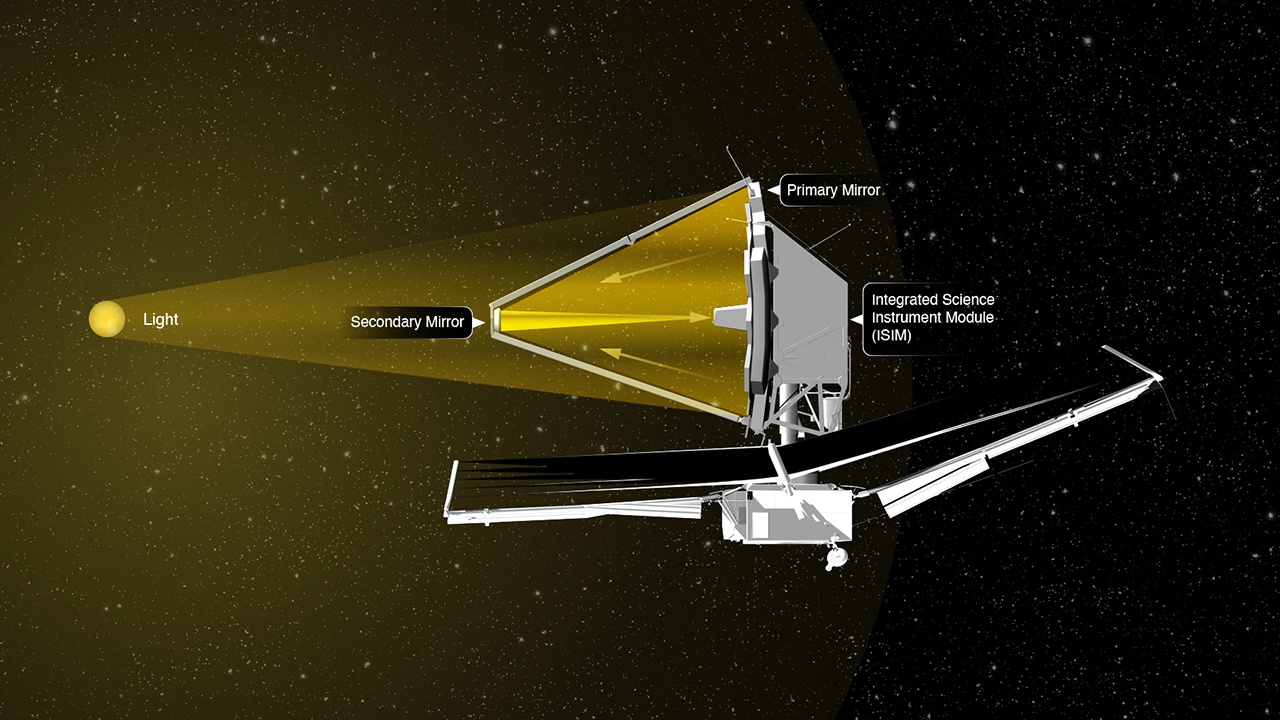Ladies and gentlemen, we have a telescope.
The secondary mirror on the James Webb Space Telescope was successfully deployed in space today, an incredibly important milestone.
“We are 600,000 miles from Earth and we have a telescope,” said Bill Ochs, JWST program manager, speaking triumphantly to his team after the secondary mirror was deployed and then latched in place.
While much of the nail-biting focus has been on making sure the observatory’s sunshield and primary mirror deploy correctly, a less talked-about but extremely important component of making the telescope function correctly is the secondary mirror.

“If the secondary mirror doesn’t deploy, you have no light through the telescope, and the mission is over,” said Dr. Heidi Hammel, an interdisciplinary scientist with the JWST project, in an interview with me last year, before the mission launched. Comparatively, Hammel said, if other components don’t deploy correctly, there would be potential work-arounds.
“If the sunshield doesn’t fully deploy [which it now has], it will really wreck our mid-infrared observations, but maybe we can still do near-infrared. If the mirror doesn’t fully open and you only have the center section, you lose sensitivity, but it could still function.”
However, without the secondary mirror, nothing happens.

JWST’s secondary mirror is quite big. In fact, it’s just a tad smaller than the Spitzer Space Telescope’s primary mirror. (Spitzer’s primary mirror is 0.85 meters in diameter, JWST’s secondary mirror is 0.74 meters.) However, it looks quite small compared to JWST’s 6.5 meter (21 ft.) diameter primary mirror. Like the primary mirror, the secondary mirror is also coated with gold, giving them both a wonderful reflective property.
The secondary mirror is on giant struts that stick out in front of the telescope. As with much of the telescope that needed to be folded up to fit inside the Ariane 5 rocket, the secondary mirror assembly also had to be folded and stowed. It was released today in a slow, carefully controlled procedure to position the mirror directly in front of Webb’s primary mirror. The successful deploy now allows light to be directed back down to Webb’s instruments.
JWST is currently on its way to its final destination in space, the second Lagrangian point (L2) 1.5 million km (1 million miles) away from Earth. Deploying the secondary mirror comes on the heels of yesterday’s huge milestone of successfully tensioning the tennis-court-sized sunshield into its final position.
The deploy of the struts holding the secondary mirror took approximately 15 minutes, and latching those struts into place took approximately 45 minutes. Engineers at the Mission Operations Center at the Space Telescope Science Institute were able to confirm the steps based on telemetry beamed back to Earth from the observatory.
Even with all the monumental success so far, there’s little time for the Webb team to pause and reflect. Three more major deployments are needed to complete Webb’s initial commissioning: an aft instrument radiator will be extended, and the two ‘wings’ of the primary mirror — each one holding 3 mirror segments – need to be folded out and locked into place. These events are expected by end of week if all continues to go well.
Lead image caption: Webb’s primary mirror intercepts red and infrared light traveling through space and reflects it onto a smaller secondary mirror. The secondary mirror then directs the light into the scientific instruments where it is recorded.Credits: IMAGE: STScI, Andi James (STScI)


Well, “we” ALMOST have a telescope. Let’s not invite bad karma for JWST with our enthusiasm to declare it successful (yet).
…We have HALF a telescope…
Without the wings deployed it could function but at a considerably smaller primary aperture. You are right – Let’s not jinx it by fist pumping yet.. That can happen when radiator and both mirror wings deploy, optic instruments checkout and reaction wheel and thrusters are functioning correctly in L2 orbit..